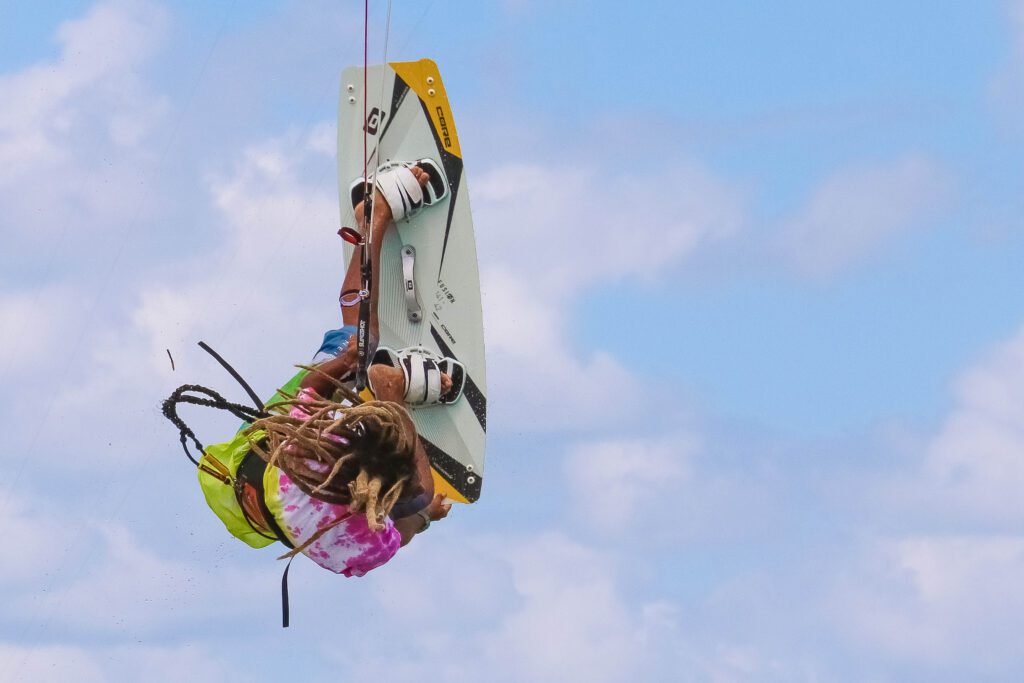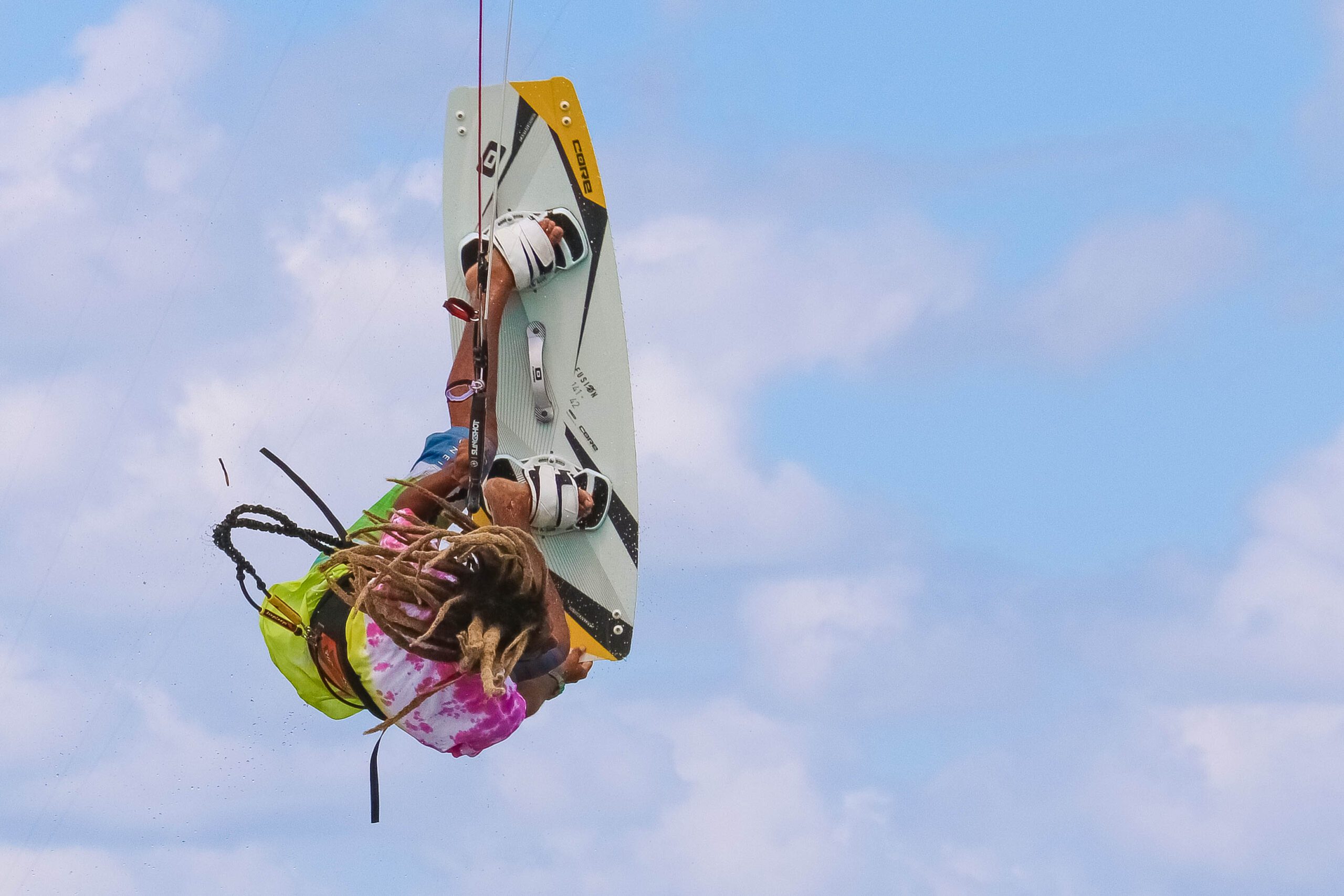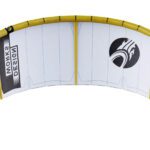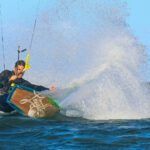
Kitesurfing Jump Control, Tricks, and Progression: Unlocking the Thrill of the Skies.
If you’re an adrenaline junkie looking for an exciting water sport that combines the thrill of flying with the rush of the waves, kitesurfing is a perfect adventure. Kitesurfing, also known as kiteboarding, involves using a kite to propel yourself on a board across the water, and it’s gaining popularity among thrill-seekers worldwide. One of the most exciting aspects of kitesurfing is performing jumps, which allow you to catch air and perform tricks. In this article, we’ll delve into the world of kitesurfing jumps, covering jump control, tricks, and progression so that you can unlock the full potential of this exciting sport.
Introduction.
Definition of Kitesurfing Jump.
A kitesurfing jump is a maneuver where the rider uses the kite’s power to launch themselves into the air while maintaining control of the kite and the board. It requires proper kite control, body position, and balance to achieve height and distance. Kitesurfing jumps can range from basic jumps, where the rider catches some air, to advanced tricks that involve spins, loops, and handle passes.
Importance of Jump Control in Kitesurfing.
Jump control is crucial to kitesurfing as it determines how high and far you can go and how smoothly you can land. Without proper jump control, you risk losing control of the kite, crashing into the water, or injuring yourself. Mastering jump control lets you perform tricks with style, increase your confidence on the water, and take your kitesurfing skills to the next level.
Kitesurfing Jump Control.
To perform successful kitesurfing jumps, you must have excellent control over the kite, board, and body. Here are some key factors to consider for effective jump control:
Understanding Wind Conditions.
Wind conditions play a crucial role in kitesurfing jumps. The wind speed and direction can affect your jumps’ height, distance, and control. It’s essential to have a good understanding of wind conditions before attempting jumps. Check the wind forecast, and choose a day with favorable conditions for kitesurfing jumps. Avoid jumping in overpowered or gusty winds, as maintaining control can be dangerous and challenging.
Proper Kite Control.
Having proper kite control is essential for successful kitesurfing jumps. You need to be able to control the kite’s power and direction to achieve height and distance. Practice flying a kite in different positions, such as zenith and neutral, and learn how to depower the kite when needed. Keep a steady tension on the lines and maintain control over the kite throughout the jump.
Body Position and Balance.
Maintaining the correct body position and balance is crucial for achieving a smooth and controlled jump. Keep your body upright, with your knees slightly bent and your eyes looking ahead. Keep your arms extended but relaxed, and use them for balance. Shift your weight towards the back foot as you initiate the jump, and maintain a centered body position in the air. Proper body position and balance will help you control the kite and board during the jump and ensure a safe landing.
Kitesurfing Jump Tricks.
Once you have mastered jump control, you can explore different jump tricks to add style and creativity to your jumps. Here are some popular jump tricks in kitesurfing:
Basic Jump Tricks.
Front Loop: In this trick, the rider loops the kite in front of them while in the air. It requires precise kite control and body position to complete the loop smoothly and land safely.
Back Loop: Similar to the front loop, the rider loops the kite behind them while in the air. It requires reasonable control of the kite and body position to complete the loop and land smoothly.
Downloop: In this trick, the rider loops the kite down towards the water and then back up while in the air. It creates a dynamic and stylish maneuver that requires precise kite control and timing.
Advanced Jump Tricks
Megaloop: This is an advanced trick where the rider performs a complete loop with the kite while in the air. It requires excellent kite control, body position, and timing to complete the loop smoothly and land safely.
Handle Pass: In this trick, the rider passes the control bar behind their back while in the air and then catches it again. It requires advanced kite control, body position, and coordination to perform the handle pass smoothly.
Kitesurfing Jump Progression.
Progressing in kitesurfing jumps requires practice, patience, and safety awareness. Here are some tips for jump progression:
Building Confidence in Jumps.
Start with small jumps and gradually increase the height and distance as you gain confidence. Practice jumps in controlled environments, such as flat water spots with no obstacles, to build your skills and comfort.
Practicing Jumps in Controlled Environments.
Choose safe and controlled environments for practicing jumps, such as shallow water spots with no rocks or obstacles. Avoid jumping in crowded areas or near other riders to reduce the risk of collisions.
Seeking Professional Instruction.
Consider taking lessons from a certified kitesurfing instructor to learn proper jump techniques and safety measures and progress at a safe pace. A professional instructor can provide valuable guidance and feedback to help you improve your jump control and tricks.
Tips for Safe and Successful Kitesurfing Jumps.
To ensure safe and successful kitesurfing jumps, keep the following tips in mind:
Checking Equipment Before Jumping.
Always check your kite, lines, and board before attempting jumps. Ensure everything is in good condition and rigged to avoid equipment failures during the jumps.
Avoiding Overpowered Conditions.
Avoid jumping in overpowered or gusty wind conditions, as maintaining control can be dangerous and challenging. Choose days with favorable wind conditions for optimal jump performance.
Using Proper Safety Gear.
Wear appropriate safety gear, including a harness, impact vest, and helmet, to protect yourself during jumps. Ensure your safety leash is correctly attached to your harness and the kite to ensure quick release in emergencies.
Practicing Landings.
Landing safely is as important as achieving height and distance in kitesurfing jumps. Practice proper landing techniques, such as bending your knees upon landing and absorbing the impact with your legs to avoid injuries.
Progressing at Your Own Pace.
Take your time with advanced jump tricks with mastering the basic ones. Progress at your own pace and gradually challenge yourself to improve your skills and techniques. Remember that safety should always be a priority in kitesurfing jumps.
Conclusion.
Kitesurfing jumps are exhilarating and challenging maneuvers that require skill, control, and safety awareness. Mastering jump control, learning different jump tricks, and progressing at your own pace can help you become a proficient kitesurfer and enjoy the thrill of jumps. Always prioritize safety, check your equipment, and seek professional instruction. So, get out there, practice, and have fun mastering the art of kitesurfing jumps!
FAQs (Frequently Asked Questions).
- Q: Can I attempt kitesurfing jumps as a beginner? A: It is recommended to have a good grasp of basic kitesurfing skills and kite control before attempting jumps. Seek professional instruction and progress at your own pace.
- Q: What safety gear do I need for kitesurfing jumps? A: It is essential to wear a harness, impact vest, helmet, and safety leash adequately attached to your harness and kite.
- Q: How can I improve my kite control for jumps? A: Practice flying a kite in different positions, depowering the kite when needed, and maintaining tension on the lines to improve kite control.
- Q: Can I attempt advanced jump tricks without mastering the basic ones? A: Attempting advanced jump tricks without mastering the basic ones is not recommended. Progress at your own pace and gradually challenge yourself.
- Q: How important is safety in kitesurfing jumps? A: Safety should always be a top priority in kitesurfing jumps. Check your equipment, choose favorable wind conditions, wear proper safety gear, and seek professional instruction to ensure safe and enjoyable jumps.
Author
Latest entries
 WatersportsSeptember 16, 2024Cabrinha Moto X: Enjoy the Ride
WatersportsSeptember 16, 2024Cabrinha Moto X: Enjoy the Ride WatersportsMay 19, 2024Cabrinha 2024 Moto XL Review: The Ultimate Lightwind Kite
WatersportsMay 19, 2024Cabrinha 2024 Moto XL Review: The Ultimate Lightwind Kite WatersportsDecember 16, 2023Kiteboarding Travel
WatersportsDecember 16, 2023Kiteboarding Travel WatersportsDecember 14, 2023RED BULL KING OF THE AIR 2023
WatersportsDecember 14, 2023RED BULL KING OF THE AIR 2023




